
Nehal
MemberForum Replies Created
-
::
A real number can be any number which is a postive number or negitive number. It also inculdes integers, rational numbers, irrational number The symbol to denote a real number is ‘R’. even natural number, fractions, decimals come under real number. Real numbers are generally used in computing. Real numbers are also subset of small numbers.
Examples of real number are – 1,2,3,-1,-5,0.3,0.556, 6/7, 9/23 etc.
-
::
Stress is very harmful for a human body. It is a phenomenon in which our body releases certain level of hormones which causes increased heart rate, breathing etc. It can also be useful to cope up with certain situations but prolonged stress is always harmful for our body. Some of the harmful effects of stress are:-
1. Depression- Stress can cause depression to a human being. In this state a human body is not able to conduct its day to day activities as the body is lethargic and weak. The person feels very sad.
2. Insomnia- It is a state where a person is unable to sleep. Stress can also trigger insomnia. This can lead to physical and mental damage to a human body. A person needs to rest in order to be physically al and mentally fit.
3. High blood sugar- Stress can trigger the lungs to release higher levels of glucose in our blood system which can lead to diabetes. It can also tighten our blood vessels which also causes high level of blood sugar. It is a very fatal disease.
4. Heart attack- High level of stress can lead to heart attack. High blood pressure and increased heart rate for a prolonged period can damage the arteries which might lead to heart attack.
-
::
A female mosquito lays eggs after consuming blood. It usually lays eggs on or near water and marshy grounds. The egg can survive dry conditions for a few months. The eggs usually hatch within 24-48 hours.
Mosquitoes are harmful for a person as they carry many harmful diseases such as zika virus, dengue, malaria, yellow fever west nile virus etc. Infact, mosquitoes are one of the deadliest animals on this planet. It is very amusing to think that such a small creature can be so deadly but thousands of people die due to the diseases transmitted by them.
-
::
Human digestive system consists of a group of organ working together, the food which we intake all the organs work together to break the food and convert it into energy and different types of nutrients. The food we intake is digested and all the useful nutrients and energy is used by the body and remaining is related out of the body as by product.
It s a sum of gastrointestinal tract GIT which is also known as Alimentary canal, accessory organs. Breaking down of food is done with the help of accessory gland which is not a part of GIT, it realises enzymes.
Here is how human digestive system works:
1. Mouth – the journey of the food starts from here. Each organ present in our body contributes in digestion. Including teeth, saliva, etc. Initially the food is broken down into tiny tiny pices with the help of teeth.
2. Oesophagus or food pipe – This chewed and the broken down food enters our body with the help of food pipe. It travels down to the stomach.
3. Stomach- It is sack like thing which stores the food. It consists of HLC acid which helps in breaking down of the food. If there is any microorganism present in our food hoc acid helps to kill the one. Then it travels to Small Intestine.
4. Small Intestine- It is a tube like structure which is 10 feet long and is located in our lower part of our body, just behind the stomach. The process of digestion ends here. Then it travels to large intestine.
5. Large intestine- The main function of this gland is to absorb the the remaining water in the food which in undigested. It enables bacterial fermentation of the undigested food. It is also a thick tube like structure which is located with small intestine.
6. Rectum- There the waste food or the undigested food is sent. The remaining food comes out of the food as solid waste ‘stool’.
-
::
A subject in a sentence are referred to as person, place or thing that “performs the action”.
For Instance:
– Nehal arrived and John smiled
So here in the sentence Nehal and John are subject of the sentence as they are performing an action.
– I love dark chocolates and cake.
So here in the sentence ‘I’ is the subject.
– They went to a picnic.
So here in the sentence ‘they’ are the subject.
– An elephant was sitting on the grass.
The subject in the above sentence is ‘An elephant’
( subjects in a sentence can be long also they might also include noun and it might also include two or more noun)
– Nehal’s brown cat and Shreya’s white cat went for a walk.
So here in the sentence ‘Nehal’s brown cat and Shreya’s white cat’ are subject.
An object in a sentence can be place person or thing that “receives the action”. An object can also be a noun, or a pronoun.
For example:
– I love dark chocolates and cake.
So here in the sentence ‘chocolates and cake’ are the object.
– Nehal meet Shreya yesterday.
So here in the sentence ‘Shreya’ is the object.
– Nehal followed shreya.
So here in the sentence Nehal is the ‘subject’ and shreya is the ‘object’.
– Nehal was eating a burger.
So here in the sentence Nehal is the ‘subject’ and burger is the ‘object’.
– we want some apple juice.
So here in the sentence some apple juice is the object.
– Shreya lied to Nehal.
So here in the sentence Nehal is the obejct.
-
::
There are total eight planets in our solar system. Mars is considered to be one of those. It is the fourth plants from the sun. And our neighbour. Mars is also know as “red planet” Mars is approximately 142 million miles away from the sun and is half the size of our plants earth. A day in mars could be as Lon as 24.6 hours and a year in mars can be off 687 days.
Mars have two moons, which are small in size, Phobos and Deimos. There are a lot of mountains and longest Vally in the solar system. Mars also has volcanoes. Regions of mars are generally flat. There are a lot of dust storms on mars. The one who discovered marks with the help of telescope was Galileo Galilei. There are many rockets launched to mars. There have been n number of discoveries also.
It is know as a red planet because soil in mars looks red in colour like rusty iron. Another reason why mars is known as “red planet” because it appears reddish – orangish star from sky. Mars is a very cold planet with minus 80 degrees Fahrenheit. The another reason why mars is a red planet is because of its atmosphere. There is no life in mars as there is less of oxygen in the air and more of carbon dioxide. Mars has so much iron oxide in its surface because of which the planet is smaller and has lesser gravity that earth.
-
::
According to english dictionery ozone hole means-
“a region of marked thinning of the ozone layer in high latitudes, chiefly in winter, attributed to the chemical action of CFCs and other atmospheric pollutants. The resulting increase in ultraviolet light at ground level gives rise to an increased risk of skin cancer”.
Ozone layer had started thinning since 1980s, scientists had discovered that the thinning is because of increased concentration of ozone depleting chemicals. The ozone loss was known as Ozone hole. The two gases responsible for ozone hole are mentioned below:
Ozone depletion is because of chlorofluorocarbons and halons gases (Nitrogenous gases) which are released into the air. These gases are found in cans, refrigerator, aerosol spray etc. These gases causes chemical reactions that breaks down the molecules of ozone layer which indeed reduces the radiation absorbing capacity.
Ozone in the upper atmosphere and it absorbs ultraviolet rays and radiation. The sun releases electromagnetic radiations which are harmful for us. So earth has different atmosphere that protects it from reaching us. Uv radiation cannot be seen or felt but it has a very powerful effect. One can say that uv radiation can be a small cause of global warming. Human activities that releases pollutants in the air because ozone depletion and global warming.
It’s harmful effect on us are:
– The different type of uv rays which are released by the sun and that reaches our earth, those rays will its effect on everything be it humans, plants, animals. For humans there can be higher risk of skin cancer , sunburns, and different types of skin diseases. For plants it might attests its growth. For animals the same might happen as humans.
– Planktons are also greatly affected by the uv rays. It can also be a small reason of global warming.
-
::
It is very important to be hydrated. As water is the most essential thing. Water plays a very important role everywhere, be in our body or our atmosphere. To surive we need water. Every body part needs water to fuction properly be in cells, tissues, etc. Adult human body comprises 60% of water.
– It regulates our body temperature.
– It provides lubrication to our joints.
– It helps to increase sleep quality.
– It helps to remove the soild waste out of our body.
– It also prevents infections from happening.
– It helps to deliver nutrients to the cell.
– It also helps to provide beautiful clear skin.
– It helps to increase energy.
– It also helps to reduce weight.
– It It is very important to hydrate ourselevs.
– It also helps to create slavia.
– It also helps to prevent constipation.
– It helps to increase blood flow circulation in our body.
– It helps body from dehydrating.
When a person who does not drink enough water the person is said to be dehydrated and when a person drinks enough water the person is said to be hydrated. A person can know wether he/she is fully hydrated or not by looking at his/her urine. If the colour of the urine is yellow then the person needs to drink more water and the colour of the urine is white/pale white ( if its clear) then the person is hydrated. An adult is advised to drink at-least 10-14 glass of water, while child in the age group of 4-8 years can drink 7-8 glasses of water, while 10-14 years should drink 9-12 glasses of water.
Water is really important for our body and one should not avoid drinking water. As it helps to regulate many important fuctions of our body.
-
::
There are six fundamental rights guarantied under indian constitution. Articles 12-35 of the Indian Constitution deals with Fundamental Rights, those are as followed:
Right to Equality – Article 14-18 talks about right to Equality. This article guarantee right of equality to each and everyone. Every peron is equal in eyes of court. everyone person is equal irrespective of caste, class, creed, religion etc.
Right to Freedom – Article 19-22 talks about right to Freedom. This article guarantees right to Freedom to each and every person as India is a democratic country. The freedom right includes –
Freedom of speech and expression <div>Freedom of assembly without armsFreedom of association</div><div>Freedom to practise any profession </div><div>Freedom to reside in any part of the country.</div><div>
Right against Exploitation – Aritlce 23-24 talks about right against Exploitation. This article helps to prevent any kind of exploitation to any kind of human. This article also prohibits child labour of any form.
Right to Freedom of Religion – Article 25-28 talks about right to Freedom of Religion. This article guarantees right to Freedom of Religion to each and every person who is living in india. One is free to decide its own religion. Every person has right to profess and freely practise their religion.
Cultural and Educational Rights – Article 29-30 talks about right to Educational Rights. This article guarantee right to get education. No one will be deprived of education. This is for those section of the society who are in minority.
Right to Constitutional Remedies – Article 32 talks about right to Constitutional Remedies. Article 32 is considered as magta carta of indian consitutuion. It is also known as heart&soul of Indian Constitution. Under this Article no one can be deprived off its fundamental rights.
The main reason why they are called fundamental rights becuase they are enforceable under the court of law.
</div>
-
This reply was modified 3 years ago by
Nehal Rathi.
-
This reply was modified 3 years ago by
-
::
Lal Bahadur Shastri was born on 2nd October, 1904 at Mughalsarai, Varanasi, Uttar Pradesh. He was the subsequent Prime Minister of Independent India and furthermore a head of the Indian National Congress Party. His mother’s name was Ramdulhari, and his Father was Sharada Prasad Srivastava. His father use to teach in school and his mother was a house wife who looked after him and two other sister. Lal Bahadur Shastri got a feeling of enthusiasm from one instructor named ‘Nishkameshwar Prasad Mishra. He went to jail when he was in the class 10th. He finished his Bachelor’s in Philosophy and got the title of ‘Vidyapeeth.’
He showed an uncommon nature of courage and determination and assurance during his serviceas prime minister. He gave a motto named ‘Jai Jawan, Jai Kisan.’ He joined the National Congress and went to prison for over two years. He partook in numerous occasions and developments. He was a very good friend of Mahatma Gandhi and Pandit Jawahar Nehru. At the point when he was considering his Degree, he conveyed numerous speeches on Gandhi. With time he became one of the faithful devotees of Gandhi.
After India got Independence, he turned into the Minister of Police and Transport in UP. He brought numerous progressions during his service, such as permitting ladies/woman to work, utilizing water planes to scatter people etc. Soon he became PM of India in the year 1964 to 1966. But he served his duty of a very short period. He passed on at Tashkent when he was there for signing the peace treaty to stop the India-Pakistan war. His reason for death is as yet a secret for the entire world. There are many theories which claims that his death was a planed one.
After he passed on, he was granted the ‘Bharat Ratna.’
-
::
Films has been a piece of entertainment for quite a while frame. It makes an enormous effect on individuals everywhere on the world. At the end of the day, it assists them with offering a reprieve from dullness. It has developed significantly so far. Film is an incredible break from reality. Besides, it helps in restoring the psyche of an individual. It definitely is helpful from multiple points of view, it is likewise making a contrary effect that can be negative on individuals and society. We should understand and distinguish the privilege from wrong and settle on choices likewise.
Advantages/merit of Cinema’s:
– It assists us with encountering the fact of what’s going on in our society. It depicts things as they are and helps in making us fully aware of issues we may have all around overlooked before.
– It assists individuals to socialise more and in a comfortable manner. It connects an individuals and helps them to socialise better. Individuals frequently talk about film to begin a discussion or more.
– Film brings to us various societies of the world. It acquaints us with different fine arts and helps us in acquiring information about how various individuals lead their lives.
Disadvantage/demerit of cinema’s:
– It generalises a great deal of things including sex jobs, strict practices, networks and then some. This creates a negative impact or thought and an antagonistic effect against that specific gathering of individuals.
– Individuals additionally believe it to be an exercise of wasting as the greater part of the films these days are not giving knowledge or showing anything important.
– Film shows pretty vicious and sexual substance these days. It adds to the obscenity and eve-teasing present in our society today. Subsequently, it damages the brain of youthful personalities of the world seriously.
-
::
On Sunday, 13th April 1919, Dyer, persuaded a significant insurgence could occur and restricted all gatherings. This notification was not generally scattered, and numerous townspeople accumulated in the Bagh to commend the significant Hindu and Sikh celebration of Baisakhi, and peacefully protest the capture and removal of two leaders, Satyapal and Saifuddin Kitchlew. Dyer and his soldiers entered the bagh, obstructing the primary passage behind them, took up position on a raised bank, and with no notice started shooting at the group for around ten minutes, coordinating their projectiles generally towards the couple of open entryways through which individuals were attempting to escape, until the ammo supply was practically depleted. The next day Dyer expressed in a report that “I have heard that somewhere in the range of 200 and 300 of the group were killed. My gathering terminated 1,650 rounds”.
The Hunter Commission report distributed the next year by the Government of India condemned both Dyer actually and furthermore the Government of the Punjab for neglecting to calculate a loss tally, and cited a figure offered by the Sewa Samati (a Social Services Society) of 379 recognized dead, and around 1,200 injured, of whom 192 were seriously injured. The loss number assessed by the Indian National Congress was more than 1,500 harmed, with around 1,000 dead.
Dyer was praised for his activities by some in Britain, and for sure turned into a saint among large numbers of the individuals who were straightforwardly profiting by the British Raj in India, like individuals from the House of Lords. He was, in any case, broadly reviled and scrutinized in the House of Commons, whose July 1920 board of examination reprimanded him. Since he was an officer following up on orders, he could not be tried for murder. The military decided not to bring him under the watchful eye of a court-martial, and his only punishment was to be eliminated from his present post and was turned down from a promotion, and banned from additional work in India. Dyer along these lines resigned from the military and moved to England, where he died in 1927 without facing any consequences for his brutal and inhumane actions.
-
::
The constitution of India is know as the supreme law of India. The constitution of India lays down the structure procedures, powers, duties of government, fundamental rights, directive principles of state policy, duties of citizens & political code. It is one of the longest and lengthiest constitution of the world. It was made effective on 26 January 1950, and was adopted on 26 November 1949 by the Constituent Assembly of India. Dr BR Ambedkar was known as father of Indian Constitution.
Few Facts about Indian Constitution:
– Indian Constitution was written in Hindi and English language.
– Indian Constitution is one of the longest and lengthiest constitution of the world.
– Indian Constitution is the only written constitution. Was Handwritten by Prem Behari Narain Raizada.
– Indian Constitution declares India as a Sovereign, Socialist, Secular and Democratic, Republic.
– The first meeting was held on 26 January 1950, and it took almost 3 years to write it down.
– The final draft was ready on 26 November 1949. And was signed on 24 January 1950.
– Indian Constitution is a “ bag of borrowings”. Different parts of the Indian constitution was taken from different parts of the world.
– Total of 103 times the Indian constitution was amended, since the time it was enacted.
– Indian Constitution talks about Directive principles of state policy (DPSP).
– Indian Constitution talks about Fundamental Rights.
– Indian Constitution also talks about Fundamental Duties.
-
This reply was modified 2 years, 12 months ago by
Nehal Rathi.
-
This reply was modified 2 years, 12 months ago by
-
::
Everything in Earth’s framework can be put into one of four significant subsystems: land, water, living things, and air. All of these together are further know as lithosphere, hydrosphere, biosphere, and atmosphere. All of these are equally important and have their own relevance.
Lithosphere:
It is accepted the lithosphere advanced about 4.6 billion years prior. The lithosphere alludes to the strong, rough & rocky crust outside that covers the whole planet. This strong, rough outside layer is made out of various rocks that have been rouped into three classes dependent on how they have formed their shape. The different types of rocks are Metamorphic rocks, Sedimentary rocks and Igneous rocks.
The lithosphere incorporates a different number of various landforms like mountains, valleys, rocks, minerals and soil. The lithosphere is continually changing because of powers and pressing factors like the sun, wind, ice, water and synthetic changes. The Earth’s surface is made into two kinds out of lithospheres. They are known as the “maritime and mainland lithospheres”.
The oceanic lithosphere incorporates the highest layers of mantle which is finished off with a slight yet substantial oceanic crust. The hydrosphere and lithosphere meet at this place. The continental lithosphere incorporate the highest layers of mantle which is finished off with a thick yet light continental crust. Here Atmosphere, hydrosphere and biosphere meets.
Hydrosphere:
In hydrosphere, the main asset is water. The hydrosphere consists of all form of water that is present in Earth’s surface. The types of water incorporate things like the sea, lakes, streams, snow and ice sheets, water under the earth’s surface and surprisingly the water fume that is found in the environment. The hydrosphere is consistently in motion as seen through the development and stream of water in waterways, streams and the (sea shore). Plants and living creatures beings depend on the hydrosphere for their endurance as water is fundamentally very important to survive. The hydrosphere is likewise home to numerous plants and creatures and it accepted that the hydrosphere covers around 70% of the world’s surface.
-
::
Dr. APJ Abdul Kalam needs no introduction. He is one of the most famous personality around the country. His full name is Avul Pakir Jainulabdeen Abdul Kalam known as Dr. APJ Abdul Kalam. He was born in Tamil Nadu on 15th October 1931. He was born in a family which financially was too stable. He from his childhood supported his family financially with that he also continued his education also never gave up on that. He had a lot of struggle in his childhood but even after those things he never gave up and decided to do what he wanted to. There are countless contributions that this person has given to the society and country at large. He became a Indian aerospace scientist and politician. He is known for his missiles developments, by the name Agni and Prithvi.
This is also the reason why he is known as the “Missile Man of the India”.
The nuclear force that India has is because of him. Under his watchful eyes India successfully conducted its nuclear tests. He also served as President of India from 2002 to 2007. Even after leaving presidential ship he continued to spread knowledge all around the country. He is also known as “President of People”. There are different books written on him, one of them is “The wings of fire”. He died of cardiac arrest in 2015.
He had received multiple awards because of his contribution too many fields. He has won awards Internationally also. He has received Bharat Ratna in 1997, Padma Vibhushan in 1990, Padma Bhushan in 1981. He won ‘Indira Gandhi Award for National Integration’ by the Government of India in 1997. He won ‘Ramanujan Award’ by the ‘Alwars Research Centre’, back in 2002. United Nations also recognized Kalam’s 79th birthday as World Students’ Day.
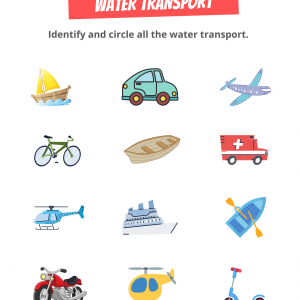 Free Transportation Worksheets for Preschoolers
Free Transportation Worksheets for Preschoolers  Animal Adjectives Flashcards
Animal Adjectives Flashcards 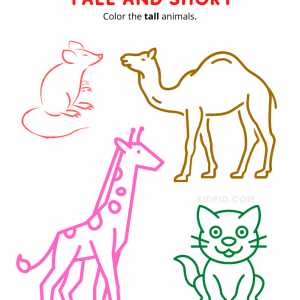 Tall & Short Worksheets for Preschool - Free Printables
Tall & Short Worksheets for Preschool - Free Printables 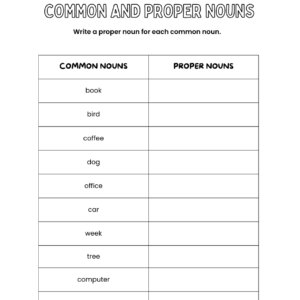 Write a Proper Noun for Each Common Noun
Write a Proper Noun for Each Common Noun 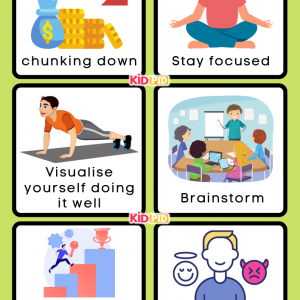 Learning Pit Flashcard Strategies
Learning Pit Flashcard Strategies 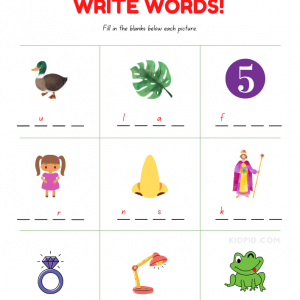 Write 4 Letter Words Worksheet for Grade 1
Write 4 Letter Words Worksheet for Grade 1 